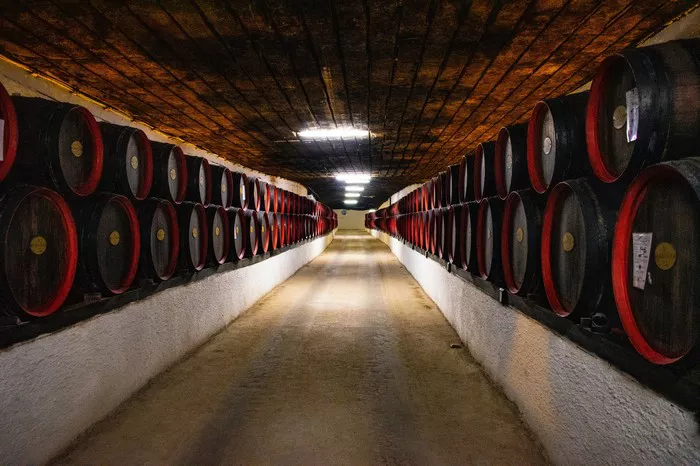In the realm of wine, the question of longevity often takes center stage. Wine enthusiasts, collectors, and casual drinkers alike ponder over the optimal duration to preserve the flavors and aromas of their cherished bottles. Among the various closures used in the wine industry, screw tops have gained popularity for their convenience and efficacy in preserving wine quality. But how long does screw top red wine last unopened? Let’s delve into the intricacies of this inquiry to uncover the factors at play.
Understanding the Dynamics of Screw Top Red Wine Preservation
Screw top closures, also known as Stelvin caps, have revolutionized the wine industry since their introduction in the late 20th century. Unlike traditional cork closures, which can sometimes lead to cork taint or oxidation, screw tops provide a reliable seal, minimizing the risk of spoilage and ensuring consistency in wine quality. When it comes to red wine, the longevity of screw top-sealed bottles largely depends on several key factors.
Quality of the Wine
The quality of the wine itself serves as a fundamental determinant of its lifespan in a sealed bottle. High-quality red wines crafted from robust grape varieties, such as Cabernet Sauvignon, Merlot, or Syrah, often possess greater aging potential compared to more delicate varietals. Consequently, a well-made screw top red wine is likely to maintain its integrity for an extended period when stored properly, even if left unopened for an extended duration.
Storage Conditions
Optimal storage conditions play a pivotal role in preserving the freshness and character of screw top red wine. Exposure to heat, light, and fluctuations in temperature can accelerate the aging process and compromise the wine’s quality. Ideally, screw top red wine should be stored in a cool, dark environment with consistent temperature and humidity levels. Cellars, wine refrigerators, or temperature-controlled cabinets provide suitable conditions for long-term storage, maximizing the wine’s longevity even when left unopened.
Bottle Orientation
The orientation of the wine bottle can impact its longevity, particularly for screw top closures. Unlike cork-sealed bottles, which benefit from storing horizontally to keep the cork moist and prevent oxidation, screw top bottles can be stored upright without affecting the wine’s quality. This versatility offers convenience to wine enthusiasts with limited storage space while ensuring the wine remains pristine until it’s ready to be enjoyed.
Variability Among Winemakers
It’s essential to recognize that not all screw top red wines are created equal. Winemakers may employ varying techniques and technologies during the production process, leading to differences in the wine’s stability and aging potential. Some producers may opt for early-drinking styles intended for immediate consumption, while others craft wines with the intention of prolonged aging under screw top closures. As such, understanding the winemaker’s philosophy and approach can provide valuable insights into the expected lifespan of a particular bottle.
Influence of Grape Variety and Vintage
The grape variety and vintage year exert significant influence on the aging potential of red wine, regardless of the closure type. Certain grape varieties, such as Nebbiolo or Sangiovese, are renowned for their ability to develop complex flavors and aromas with age, while others may be best enjoyed in their youth. Likewise, vintage variations can impact the wine’s structure, acidity, and tannin levels, influencing its suitability for extended aging under screw top closures. Vintage charts and expert reviews can offer guidance on the aging potential of specific grape varieties and vintages.
Impact of Oxygen Transmission
While screw top closures provide an effective barrier against oxygen ingress, a minimal amount of oxygen transmission may still occur over time. Unlike natural cork, which can breathe and allow micro-oxygenation to facilitate the wine’s evolution, screw tops create a more airtight seal. However, this limited oxygen transmission can contribute to subtle changes in the wine’s aroma and flavor profile, potentially enhancing its complexity with age. Understanding the delicate balance between oxygen exposure and preservation is crucial in assessing the longevity of screw top red wine.
Factors Influencing Longevity
Several factors influence the longevity of screw top red wine, both before and after bottling. The grape variety, winemaking techniques, storage conditions, and closure integrity all contribute to the wine’s ability to withstand the test of time. Additionally, external factors such as temperature fluctuations during transportation and storage can impact the wine’s stability and aging potential. By considering these variables collectively, wine enthusiasts can make informed decisions regarding the purchase, storage, and aging of screw top red wines.
Best Practices for Preserving Screw Top Red Wine
To maximize the lifespan of screw top red wine, adhering to best practices for storage and handling is paramount. Here are some recommendations to ensure optimal preservation:
Store the wine in a cool, dark place away from direct sunlight and heat sources.
Maintain consistent temperature and humidity levels to prevent fluctuations that can compromise the wine’s quality.
Store the bottles upright to minimize the risk of cork taint and ensure a secure seal.
Avoid exposing the wine to temperature extremes during transportation and storage.
Consider investing in a wine refrigerator or cellar for long-term storage of valuable bottles.
Monitor the wine periodically for any signs of leakage or damage to the closure.
Keep detailed records of the wine’s purchase date, vintage, and storage conditions for future reference.
By following these guidelines, wine enthusiasts can prolong the lifespan of screw top red wine and savor its flavors and aromas with confidence.
Conclusion
In conclusion, the question of how long screw top red wine lasts unopened is multifaceted, with various factors influencing its longevity. While screw top closures offer a reliable seal against oxidation and spoilage, the quality of the wine, storage conditions, and other variables play crucial roles in determining its lifespan. By understanding these dynamics and adhering to best practices for preservation, wine enthusiasts can enjoy the benefits of screw top red wine for years to come. Whether it’s a youthful red blend or a well-aged vintage, the journey of exploration and appreciation continues as each bottle reveals its unique character over time.


